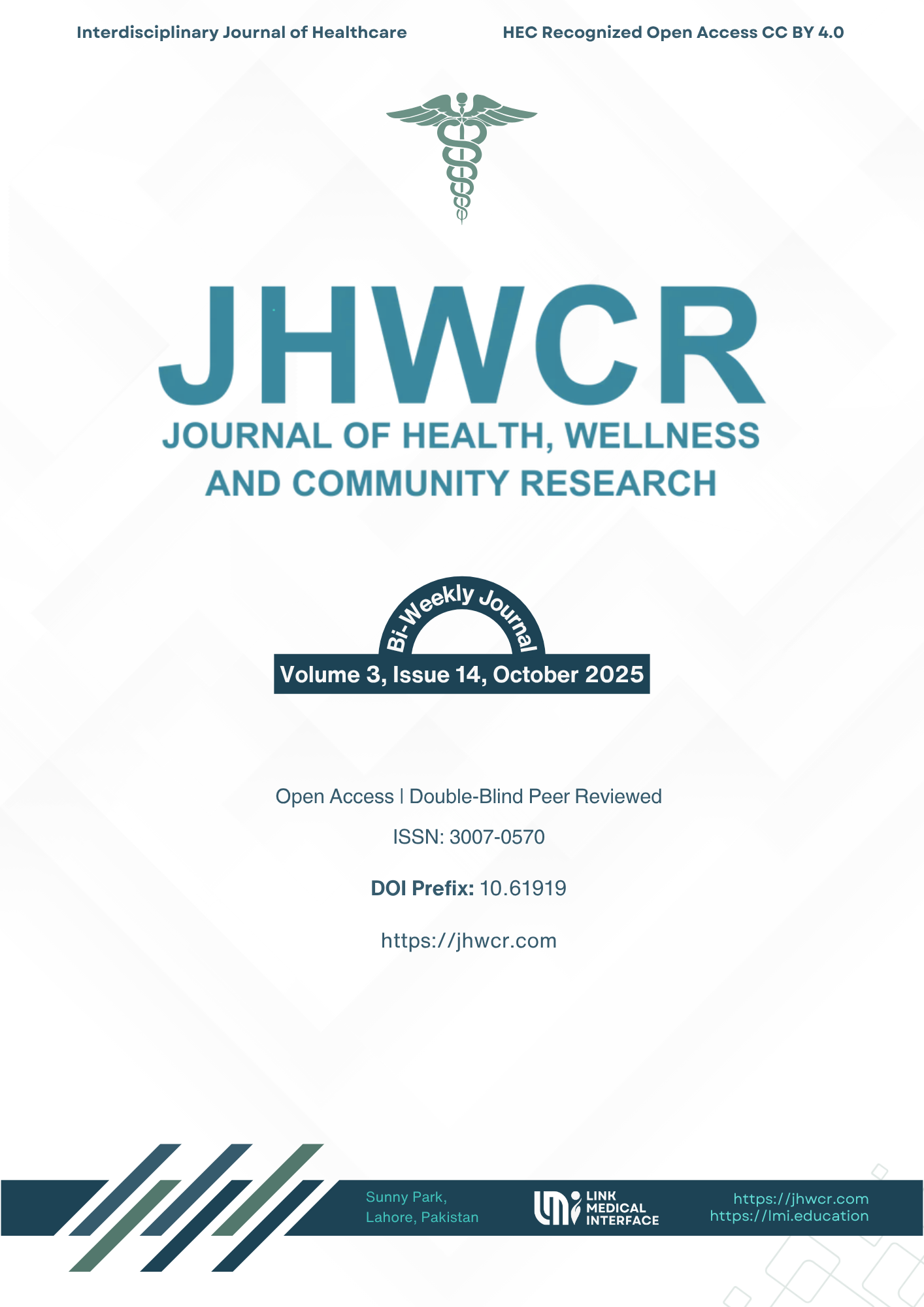High Yield of Bronchoscopy for Foreign Body Aspiration in Children With Unresolved Pneumonia: A Retrospective Study
DOI:
https://doi.org/10.61919/0qnbpw41Keywords:
Foreign Body Aspiration, Bronchoscopy, Unresolved Pneumonia, Pediatric Airway, Diagnostic YieldAbstract
Background: Foreign body aspiration is a leading cause of morbidity and mortality in children and often presents as unresolved pneumonia resistant to conventional antibiotic therapy. Rigid bronchoscopy remains the gold standard for both diagnosis and treatment, yet its diagnostic yield in children with unresolved pneumonia and suspected aspiration remains underreported in regional settings. Objective: To determine the diagnostic yield of rigid bronchoscopy in pediatric patients presenting with unresolved pneumonia and a clinical or radiological suspicion of airway foreign body aspiration, and to describe the types and anatomical sites of retrieved objects. Methods: This retrospective observational study was conducted at the ENT Department of Ayub Teaching Hospital, Abbottabad, Pakistan, over a two-year period (January 2022–December 2024). Medical records of 64 children aged 1–20 years who underwent rigid bronchoscopy for unresolved pneumonia were reviewed. Data on demographics, clinical findings, radiographic features, and bronchoscopy outcomes were analyzed using descriptive and inferential statistics, with p < 0.05 considered significant. Results: The overall diagnostic yield was 71.9% (46/64). The mean age was 5.70 ± 4.69 years, with the highest frequency among one-year-olds (26.6%). The right main bronchus was the most common site of impaction (45.3%). Organic foreign bodies, primarily peanuts, were predominant in younger children (15.6%), whereas metallic scarf pins were common among older children (10.9%). Unilateral hyperinflation on chest radiographs was significantly associated with positive bronchoscopy findings (p = 0.049). Conclusion: Rigid bronchoscopy demonstrated a high diagnostic and therapeutic yield in children with unresolved pneumonia and suspected foreign body aspiration. Early bronchoscopic evaluation in selected patients is essential for timely intervention, reduction of morbidity, and prevention of chronic pulmonary complications
Downloads
Published
Issue
Section
License
Copyright (c) 2025 Ahmed Arif, Rehan Ullah, Sundas Ghani, Farman Ullah (Author)

This work is licensed under a Creative Commons Attribution 4.0 International License.


